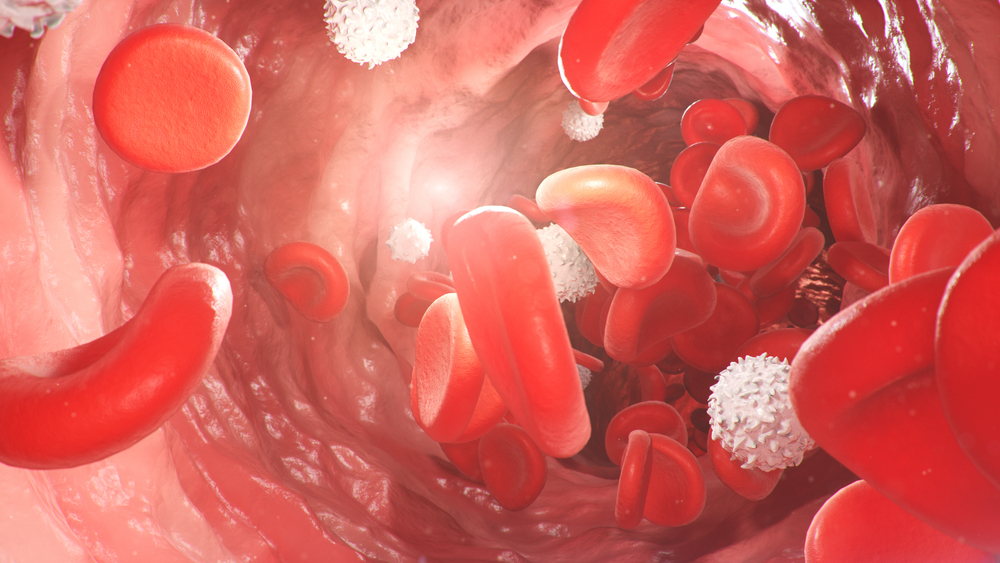
What is being tested?
This test counts the number of red blood cells (RBC) in a litre of blood. Red blood cells, which are made in the bone marrow, carry oxygen from the lungs to the cells and transport carbon dioxide from the cells to the lungs. Women tend to have lower RBC counts than men, and levels tend to decrease with age. Changes in RBC are usually associated with changes in haemoglobin levels. If RBC are destroyed or last faster than they are replaced or if there is disruption to RBC production in the bone marrow, the patient is said to be anaemic. if there are too many RBC produced and released into the circulation, the patient is said to be polycythaemic.
How is it used?
A RBC count is used to evaluate any type of decrease (anaemia) or increase (polycythaemia) in red blood cells as measured per litre of blood. These changes must be intterpreted in conjunction with other parameters, such as haemoglobin, haematocrit and/or RBC indices
When is it requested?
A RBC count is normally requested as a part of the full blood count (FBC) often as part of a routine examination, pre-surgical procedure or for other clinical reasons. The test is also repeated in patients who have haematological disorders, bleeding problems, chronic anaemias, polycythaemia and/or in patients undergoing chemotherapy or radiation treatment.
What does the result mean?
A low RBC count may indicate anaemia, bleeding, kidney disease, bone marrow failure (for instance, from radiation or a tumour), malnutrition, or other causes. A low count may also indicate nutritional deficiencies of iron, folate, vitamin B12, and vitamin B6. A decreased number of RBCs results from either acute or chronic blood loss. Acute blood loss is a rapid depletion of blood volume. Chronic blood loss stems from various conditions that often results in some form of an anaemia. Chronic anaemias are due to loss of small amounts of blood over a long period of time (bleeding), mechanical destruction of the RBCs, or some physiological problem such as decreased RBC production.
A high RBC count may indicate congenital heart disease, dehydration, obstructive lung disease, bone marrow over-production or situations involving tissue hypoxia.
The list below includes some of these conditions.
Decreased RBC
Increased RBC
Is there anything else I should know?
Alteration of the number of RBCs is often transient and can be easily corrected and/or returned to normal levels by eliminating the causative agent. Normal decreases in red blood cells are seen during pregnancy as a result of normal body fluid increases that dilute them.
Living at high altitudes causes an increase in RBC counts; this is your body's response to the decreased oxygen available at these heights.
Drugs that may increase RBC levels include gentamicin and methyldopa.
Common questions
First, your doctor must determine the cause of your abnormal RBC count so that s/he can prescribe appropriate treatment. Treatment may include a vitamin or mineral supplement, a change in your nutrition, or replacement with red blood cells from a blood donor. Alternatively it may only require changing your current medication or prescribing a drug to stimulate red cell production in your bone marrow, especially in patients who have received chemotherapy or radiation treatments.
No. This test is performed by trained laboratory personnel.
Yes, to the extent that if you eat a well-balanced diet, you can prevent anaemias due to deficiencies of iron, vitamin B12 or folate intake. RBC problems that are caused by disease conditions are not likely to be corrected by diet.
Tiredness (fatigue) may indicate a low RBC count. Fainting, pallor (loss of normal skin colour), can indicate low RBCs. Disturbed vision, headache and flushing may be present with increased numbers of RBC.
More information
What is Pathology Tests Explained?
Pathology Tests Explained (PTEx) is a not-for profit group managed by a consortium of Australasian medical and scientific organisations.
With up-to-date, evidence-based information about pathology tests it is a leading trusted source for consumers.
Information is prepared and reviewed by practising pathologists and scientists and is entirely free of any commercial influence.